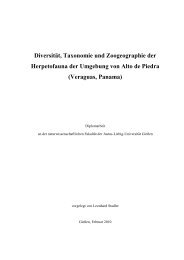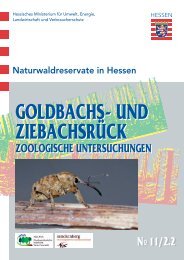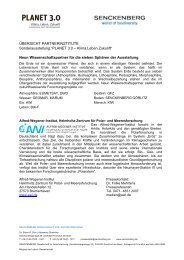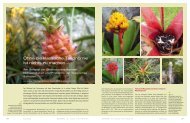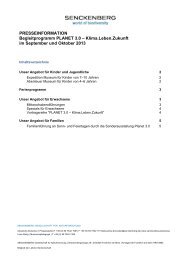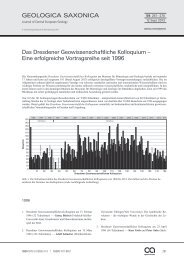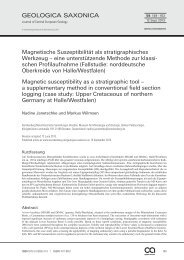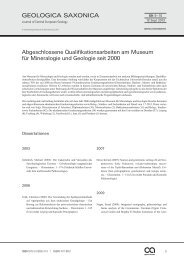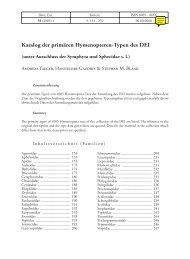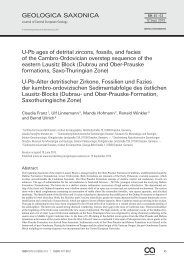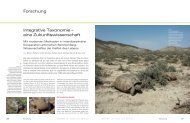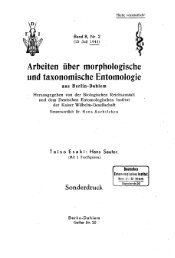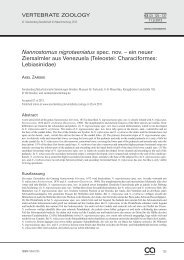Taxonomic publications: past and future - Senckenberg Museum
Taxonomic publications: past and future - Senckenberg Museum
Taxonomic publications: past and future - Senckenberg Museum
Create successful ePaper yourself
Turn your PDF publications into a flip-book with our unique Google optimized e-Paper software.
Burckhardt & Mühlethaler (eds): 8 th GfBS Annual Conference Abstracts 40<br />
Nephridial development in the Onychophora <strong>and</strong> its bearing on the Articulata<br />
hypothesis<br />
G. Mayer<br />
According to the traditional Articulata hypothesis, segmentation represents the major<br />
synapomorphy of the Annelida <strong>and</strong> Arthropoda. The homology of segmentation<br />
indeed seems to be mainly supported by serially arranged coelomic cavities <strong>and</strong><br />
nephridia only. This support, however, is ambiguous because coelomic cavities are<br />
lacking <strong>and</strong> nephridia are strongly modified in adult arthropods. In view of the recent<br />
phylogenetic analyses of molecular data, segmentation of annelids <strong>and</strong> arthropods<br />
must be either convergent or an ancestral feature of bilaterians. In order to clarify the<br />
issue, more detailed studies on segmentation in annelids <strong>and</strong> arthropods are needed.<br />
Among arthropods, onychophorans are traditionally considered to share several<br />
morphological correspondences with annelids. In order to contribute to the current<br />
discussion on the homology of segmentation, I focused on the embryogenesis in the<br />
Onychophora. Recent ultrastructural studies on mesoderm differentiation revealed<br />
that there are fundamental differences in the formation of nephridia between the<br />
Annelida <strong>and</strong> Onychophora. The metanephridia of annelids originate from single<br />
stem cells or “nephridioblasts” whereas the nephridia of onychophorans (<strong>and</strong> other<br />
arthropods) arise from large portions of embryonic coelomic walls. The present <strong>and</strong><br />
further new findings do not support the traditional Articulata hypothesis, since specific<br />
correspondences in organ systems that characterize segmentation in annelids <strong>and</strong><br />
arthropods are lacking. It remains to be elucidated, however, why serially arranged<br />
transitory coelomic cavities arise in arthropods at all.<br />
Org. Divers. Evol. 5, Electr. Suppl. 13 (2005)



